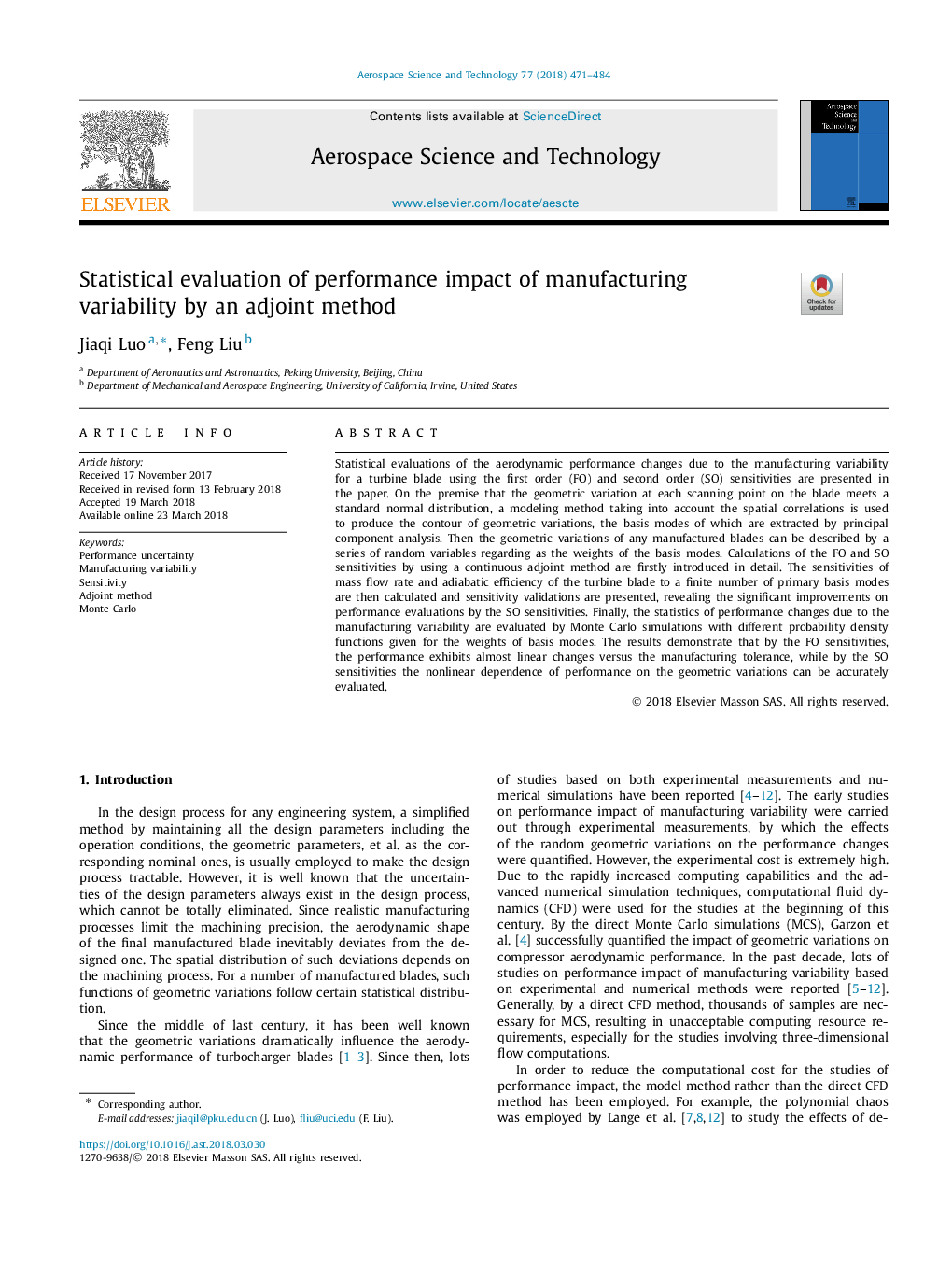| Article ID | Journal | Published Year | Pages | File Type |
|---|---|---|---|---|
| 8057705 | Aerospace Science and Technology | 2018 | 14 Pages |
Abstract
Statistical evaluations of the aerodynamic performance changes due to the manufacturing variability for a turbine blade using the first order (FO) and second order (SO) sensitivities are presented in the paper. On the premise that the geometric variation at each scanning point on the blade meets a standard normal distribution, a modeling method taking into account the spatial correlations is used to produce the contour of geometric variations, the basis modes of which are extracted by principal component analysis. Then the geometric variations of any manufactured blades can be described by a series of random variables regarding as the weights of the basis modes. Calculations of the FO and SO sensitivities by using a continuous adjoint method are firstly introduced in detail. The sensitivities of mass flow rate and adiabatic efficiency of the turbine blade to a finite number of primary basis modes are then calculated and sensitivity validations are presented, revealing the significant improvements on performance evaluations by the SO sensitivities. Finally, the statistics of performance changes due to the manufacturing variability are evaluated by Monte Carlo simulations with different probability density functions given for the weights of basis modes. The results demonstrate that by the FO sensitivities, the performance exhibits almost linear changes versus the manufacturing tolerance, while by the SO sensitivities the nonlinear dependence of performance on the geometric variations can be accurately evaluated.
Keywords
Related Topics
Physical Sciences and Engineering
Engineering
Aerospace Engineering
Authors
Jiaqi Luo, Feng Liu,
